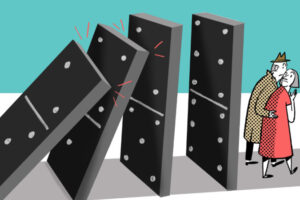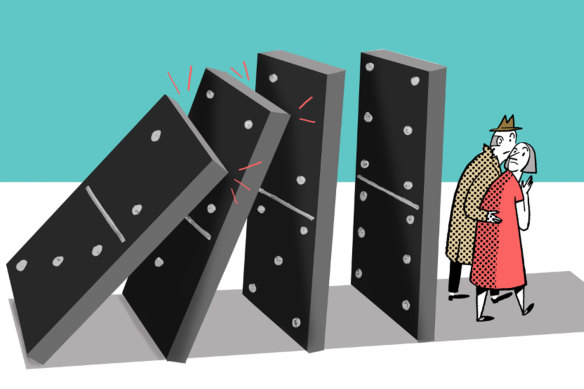How to prevent a few bad years from ruining your retirement savings

While it may seem obvious, the order in which your investment returns occur has a big impact on your long-term outcome. This is known as sequencing risk, and it’s an important thing to stay on top of as you approach retirement.
Let’s say in the first year of your working life, investment markets had an unusually strong year and returns were twice the long-term average. This is not very helpful to you because you would have very little in superannuation and probably no investments either.
The order in which your investment returns occur has a big impact on your long-term outcome.Credit:Illustration: Simon Letch
However, contrast this though to someone who is just about to retire. A year of unusually high returns when applied to their large superannuation balance is likely to have a significant impact on how long their money lasts in retirement, how much they can spend in retirement and even the size of their estate.
For both the young person in their first year of work and the retiree, it may well be that over 10 or 20 years markets generate the same average return, but the timing of those returns – the sequence – delivers vastly different outcomes for each investor.
When considering sequencing risk, the main concern is for unusually poor returns, typically in significant market declines. In a bad year, the young person in their first year of work is almost entirely unaffected. However, the person about to retire will see a significant drop in the balance of their retirement savings. This drop may be irrecoverable, which is why sequencing risk matters.
Peak exposure to sequencing risk is the point at which you retire. Generally, we’d cast the net a bit wider and apply this a few years before retirement, and for the initial few years of retirement. This period is the point where several consecutive bad years could have a significant long term detrimental impact.
It’s worth noting the risk is most prevalent during periods when the market experiences several consecutive bad years, which is fortunately rare. Downturns followed by sharp upticks, like during the pandemic, will not harm your savings.
How do you manage sequencing risk? The solution that is right for you depends on your particular circumstances, but here are four ideas to get you thinking:
It’s worth mentioning the competing challenge of longevity risk. You could eliminate sequencing risk by simply holding all of your retirement savings in cash, but it’s unlikely this will provide you with enough returns for a comfortable retirement. This is known as longevity risk – the risk that you will outlive your money.
A balance then needs to be struck between not being too exposed to sequencing risk around the point of retirement while not being too conservative to the point where you lock in a poor long-term outcome.
- Advice given in this article is general in nature and is not intended to influence readers’ decisions about investing or financial products. They should always seek their own professional advice that takes into account their own personal circumstances before making any financial decisions.
Paul Benson is a certified financial planner, and host of the Financial Autonomy podcast.
Most Viewed in Money
From our partners
Source: Read Full Article

